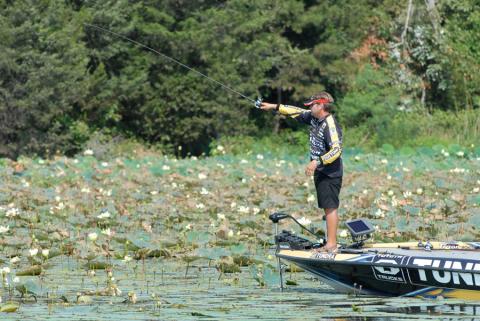Bob Humphrey | Originally published in GameKeepers: Farming for Wildlife Magazine

The face of hunting is changing. There was a time, not so long ago when hunters were strictly consumers — our contributions to wildlife conservation were limited largely to license fees to support state wildlife agencies and perhaps membership in a non-profit conservation organization. Increasingly, hunters are becoming more involved and getting their boots on the ground — often, their own ground — to improve the quality and quantity of both the wildlife and habitat on that ground. The hunter has evolved into a hunter-conservationist or hunter-manager known as a gamekeeper. And nowhere is this more apparent than with deer.
More folks now realize that the reward from harvesting a deer is magnified tenfold when that deer is a product of their own efforts. We’re no longer satisfied with just shooting deer. We want to grow and manage them. Herd management is not unlike planting your own vegetable garden or food plot. In order to do it right, you need to know when and how to plant, weed and harvest your crop. You need to develop a strategy.
Baseline
The first and most important step you’ll take in developing a deer management strategy is establishing a baseline. You wouldn’t plant a food plot without first doing a soil test. And you shouldn’t prescribe a herd management plan without first knowing the status of your land and the deer on it.
The easiest and most reliable method is to hire a professional. It’s more expensive than doing it yourself, but may be more cost-effective in the long run. Professional wildlife biologists are educated, trained and experienced. They know the most effective and efficient means for assessing your deer populations, interpreting the results and applying the appropriate measures to achieve your intended goal or goals.
However, this is the age of the do-it-yourselfer. And the more direct involvement you have, the more rewards you’ll reap from your harvest. The following general guidelines can help you toward that end. If you get stuck along the way, don’t be afraid to ask for professional help.
Survey Says...
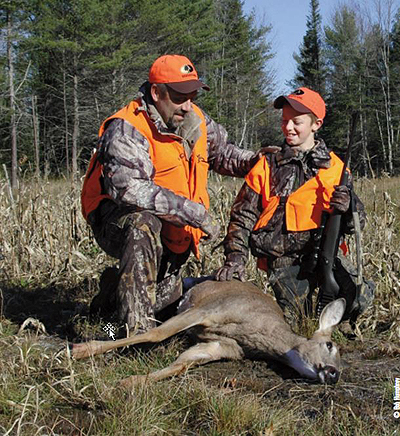
toward that end as there is no food-to-fawn energy transfer.
You’ll first want to know a little bit about your ground. The density, or how many deer are on it, is less important than how balanced they are in relation to the habitat. We can find out the former later.
The quickest and easiest way to do this is by performing a browse survey. Look for relative amounts of preferred browse species and how aggressively deer are feeding on them. Lack of preferred species or intensive browsing are signs of overabundant deer. This is one area where a professional can be of assistance, though there are numerous sources of information available on preferred food species.
Next, you’ll want to know the composition of your herd, and you don’t need a census. A survey will provide you with an index, which you can then extrapolate to the property and the population. More importantly, it will provide a baseline to compare with subsequent years. Two of the more common survey methods are spotlight counts and camera surveys.
Objectives
Now that you know where you are, you can set objectives on where you want to be. You probably already had something in mind before you started, but may decide that’s no longer feasible or practical given your herd’s status. Look not only at your land, but surrounding parcels, the town or maybe even the county or wildlife management district. Talk to your regional or state biologist. He or she can tell you what local deer densities are, and possibly what the age structure and antler producing potential are. Then you can set realistic expectations based on what you learn. There are several different management strategies you can apply. Trophy management is designed primarily to produce bucks with big antlers. It’s usually quite expensive and labor intensive, and often beyond the means and objectives of the average gamekeeper.
A far more common strategy is quality deer management (QDM). Whitetail biologist Dr. James Kroll describes a quality buck as “One that best realizes the potential of its age class, lives in quality habitat and is harvested through a quality experience.” The QDM philosophy goes a step further to include balancing sex and age ratios within the herd and balancing the herd in relation to its habitat. You can increase quantity and quality of deer by improving habitat, but the most important tool any deer manager owns is a gun. In order to reach your goal you need to determine how many and which deer to harvest.
Antlerless Deer
We begin with does because, as most deer managers know, they are the very foundation, and represent the reproductive potential of your deer herd. Whitetail deer are polygamous, which means one buck can mate with many does. Removing one buck means one less deer in the herd this year and the next.
Removing one doe has the same effect in year one. However, if it was a healthy, mature doe living in a productive range she would most likely give birth to two fawns the following year, which means one doe equals three deer in year two. Now assuming one fawn was male and the other female, doe 1 would again give birth to two fawns in year three, and, her yearling doe would give birth to one fawn. That means six deer. In year four, that single doe could represent as many as 12 deer. That's assuming no natural mortality, which of course would not be the case. Still, you get the idea how easily you can impact herd growth through doe mortality.
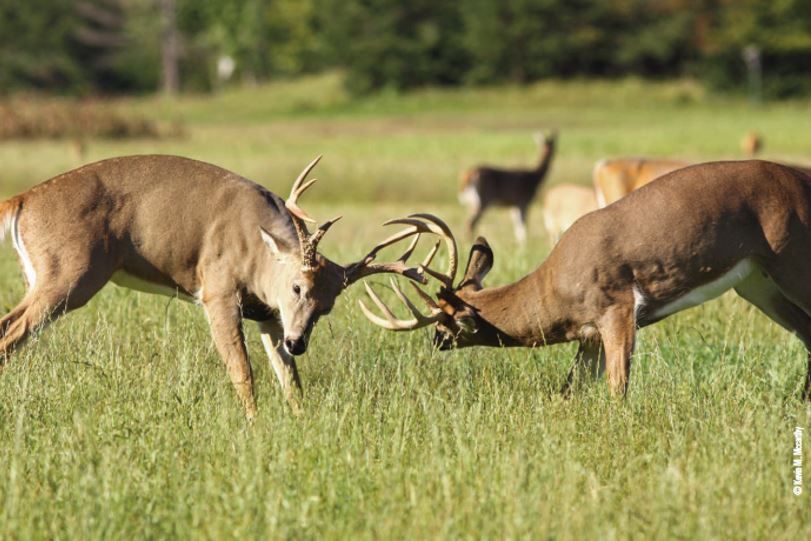
What
Several factors may influence which doe you should shoot, and they can vary with circumstances and specific objectives. If your population is above objective, any doe is fair game. Still, you can be more effective by being selective. Removing mature, healthy individuals has the greatest shortand long-term effect, and might be the best tactic in situations of over-abundance. If your goal is to grow the herd, simply reduce doe mortality.
If your herd is well-balanced with available habitat and your goal is to maintain population levels, you still want to remove some does. Target those with the lowest reproductive potential, like doe fawns, too young to breed or dried up, over-mature does are a liability. They tax food resources while giving little or nothing back in the form of more deer.
Bear in mind that shooting fawns carries the risk of accidentally harvesting a buck fawn. A certain amount of buck fawn mortality is acceptable, and expected, but if your goal is like most managers, to maximize bucks, you must keep buck fawn fatalities to a minimum.
When
Here again, how you proceed depends on your baseline and objectives. If your herd is overpopulated, the best time to remove does is any time you can. Timing becomes more important if your goal is to maintain population levels or allow slow growth.
In general, the best time to remove does, or bucks, is prior to the period of least food availability — winter — which effectively means more food available for those that survive. That’s why hunting seasons are set during the fall. The question then becomes “when in the fall is the best time?”
It’s sometimes helpful if you consider not the individual deer, but the energy balance of the population. You provide energy in the form of food, whether it’s natural habitat, food plots or supplemental feed. Both bucks and does expend a certain amount of that energy during the rut, which is then transferred into next year’s potential fawn crop.
If you remove does prior to the rut, less energy is expended toward that end as there is no food-to-fawn energy transfer. However, this also influences sex ratios during the rut. Fewer available does means more competition among bucks. That can produce a shorter, more intense rut, which may be more appealing from a hunting perspective, but it does increase energy demands on bucks. Either way, the difference between whether you cull does before or after the rut is subtle, and won’t likely have a significant effect on your overall population goals.
Antlered Deer
The general guideline for buck harvest is best summed up in the mantra: Let them go so they can grow. If you want older bucks, you have to let them reach maturity. It’s when you get more specific that things become complicated.
One of the most common methods of increasing the age structure of your buck population is through mandatory antler restrictions (MARs). Here again you have several options, and which you choose may depend on site-specific circumstances. I’ll offer a couple examples to illustrate the point.
Mississippi initiated some of the earliest MAR experiments with a statewide minimum of four points. Initial results were mostly positive, showing a decline in the proportion of yearling bucks killed. However, researchers from Mississippi State University found the four-point rule resulted in “high-grading,” where bucks with the greatest genetic potential for big antlers are harvested at a younger age, leaving only bucks with poorer quality antlers to mature into older age classes.
And the effect was greatest in areas of high-quality soils, where yearling bucks have a higher potential of sporting legal racks. As a result, the state placed large areas of state-managed lands in the Delta region under more stringent regulations, including a 15-inch minimum inside spread and a tightly-controlled lottery on a limited number of permits for taking bucks with fewer than four points.
Texas Parks and Wildlife tried a slightly different approach in the Post Oak Savannah region with a dual goal of improving age structure and increasing hunting opportunity. They instituted a slot limit wherein a legal buck had to meet at least one of three criteria: 1) one unbranched antler, 2) a minimum 13-inch inside spread or 3) at least six points on one side.
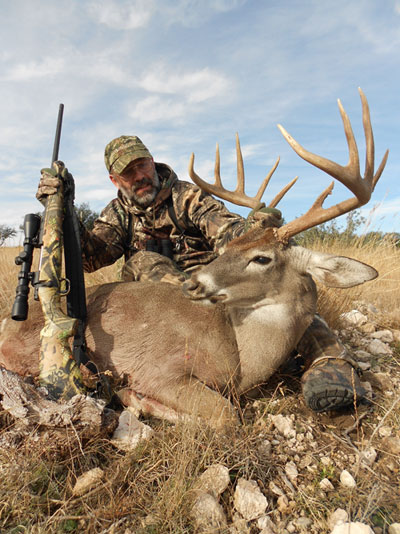
own are a gun or bow.
This system offers several advantages. The unbranched antler criterion allowed for removal of cull bucks. The other two restrictions protected nearly all healthy yearling deer, and many in the 2.5-year age class that showed good antler development. Overall results were positive, with a decline in yearling bucks and an increase in older bucks harvested. Researchers did notice hunters seemed reluctant to “burn” their tags on spikes, particularly after observing the improved antler quality and availability of mature bucks. The simple solution was to allow hunters two bucks, one of which must have one unbranched antler.
A mature buck isn’t everyone’s goal. Some hunters may be satisfied with a healthy 2- or 3-year old buck, and to get there you need only spare the yearling age class. You may also want a category for management or cull bucks. Culling spikes was once widely practiced but has proven largely ineffective, except in certain very specific circumstances. Culling over-mature bucks or older bucks showing poor antler characteristics won’t do much to change herd genetics or antler quality in the herd, but will serve to remove an extra mouth, and provide hunters a bonus on slow days.
The bottom line is this: you need to figure out what best fits your land, deer population and specific objectives. Each case is different, and in some cases it may take a little experimenting. Talk to a professional or keep pouring the pages of Mossy Oak for more specific advice on hunting and land management strategies.
Any Deer
How many of each sex you should target will depend on existing and objective sex ratios. You’ll probably want to come as close to even (1:1) as possible. Most herds are well within the 2:1 to 3:1 range, which is fine. Because most hunting pressure is directed toward bucks, the sex ratio tends to be skewed toward does anyway, though usually not to the extent you might think. Most hunters consider all antlerless deer to be does, when in fact, roughly 50 percent of fawns are bucks. Even in the worst case, you can't get much more than 5:1, except with extremely intensive management inside an enclosure. If you know what you have on the ground and have set specific objectives, the task of figuring out what to harvest becomes fairly simple.
Predator Control
It used to be something of an afterthought, but with predator populations exploding over much of the eastern U.S., predator control has taken on added importance in recent years. Studies in the southeast have shown recent dramatic declines in doe:fawn ratios, due largely to coyote predation. How intensive you get will depend on your means and ambition. You’ll never remove them all, but the more the better. Here is another area where you may be better off seeking professional help.
Record Keeping
Another important aspect of your management plan is recording as much information as possible about the deer you harvest. The more information you collect, the better. At a bare minimum, you should record date, sex and weight (live and dressed) of all deer taken. You should also try to age them - most often done by tooth-wear and replacement. If you’re not comfortable with this, consulting biologists and some states provide this as a service. Simply collect and number jaw bones and send them off for analysis after the season. You may also want to collect antler measurement data and daily field observations.
Over time, this information makes it easier to recognize trends. As habitat improves or your herd becomes more balanced, you should see an increase in body size and possibly antler dimensions. A noticeable decrease could be a sign something is amiss. Results are even more useful when used in conjunction with other information like camera surveys, hunter observation data and habitat evaluations.
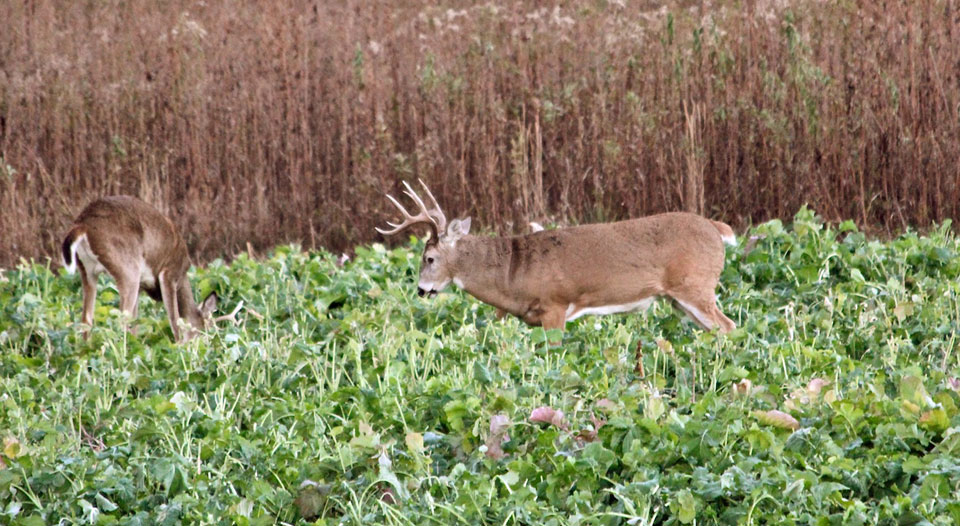
Conclusion
Don’t worry if you don’t get it right the first time, it’s a work in progress. Deer management is a dynamic process influenced by numerous variables, only some of which you have control over. Furthermore, deer are an extremely resilient and adaptable species. If you see signs you may be over-harvesting or you experience a disease outbreak, simply scale back for a season or two. If your habitat shows signs of overabundance, amp things up next season. Unless you go to extremes one way or the other, you can’t do too much damage. And along the way, you’re always learning more about deer management.
















